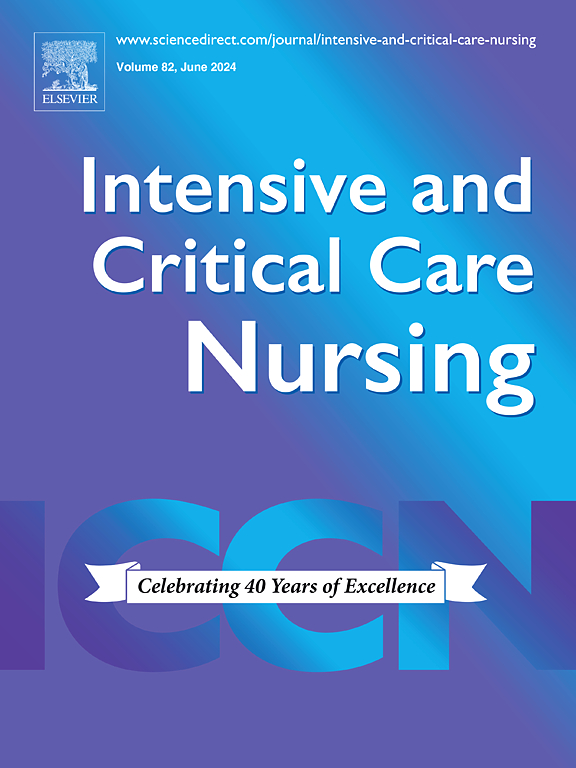需要接受体外膜肺氧合治疗的肺结核患者的流行病学和治疗效果:ELSO 登记分析。
IF 4.9
2区 医学
Q1 NURSING
引用次数: 0
摘要
目的:本研究旨在分析体外生命支持组织(ELSO)登记处的数据,以阐明需要接受体外膜肺氧合(ECMO)治疗的肺结核患者的流行病学和治疗效果:方法: 我们利用 2003 年至 2022 年的 ELSO 登记数据进行了一项回顾性分析,特别针对接受 ECMO 的结核病患者。主要结果包括出院存活率,次要结果包括ECMO前支持、ECMO持续时间、并发症和出院去向。采用单变量和多变量考克斯比例危险回归分析来确定影响存活率的因素:分析对象包括 169 名肺结核患者,ECMO 支持时间中位数为 233 小时。据记录,断血成功率为 62.7%,55% 的患者能够存活至出院。69.8%的病例出现并发症,主要是机械并发症(46.6%)。多变量考克斯回归分析发现,并发症(HR: 0.448,95% CI: 0.222-0.748,P=0.001)、感染(HR: 0.483,95% CI: 0.241-0.808,P=0.001)和从入院到开始使用 ECMO 的时间间隔过长(HR: 0.698,95% CI: 0.396-0.901,P=0.018)是与存活可能性降低相关的重要因素:结论:ECMO 是肺结核患者的可行治疗方案;然而,及时启动和精心管理对于减少并发症和提高患者预后至关重要:对临床实践的启示:为符合条件的肺结核患者准确确定最佳 ECMO 启动时机,可显著提高重症监护病房等重症监护环境的临床疗效。本文章由计算机程序翻译,如有差异,请以英文原文为准。
Epidemiology and outcomes of patients with tuberculosis requiring extracorporeal membrane oxygenation: An ELSO registry analysis
Purpose
This study aimed to analyze data from the Extracorporeal Life Support Organization (ELSO) registry to elucidate the epidemiology and outcomes of patients with tuberculosis necessitating extracorporeal membrane oxygenation (ECMO), an intervention typically employed in treating severe acute respiratory distress syndrome (ARDS), but infrequently reported in tuberculosis contexts.
Methods
A retrospective analysis was conducted utilizing the ELSO registry data spanning from 2003 to 2022, specifically targeting patients with tuberculosis who underwent ECMO. Primary outcomes included survival to hospital discharge, while secondary outcomes encompassed pre-ECMO support, ECMO duration, complications, and discharge destinations. Univariate and multivariate Cox proportional hazard regression analyses were employed to identify factors influencing survival rates.
Results
The analysis included 169 patients with tuberculosis, with a median ECMO support duration of 233 h. The weaning success rate was recorded at 62.7 %, and 55 % of patients achieved survival to hospital discharge. Complications arose in 69.8 % of cases, predominantly mechanical complications (46.6 %). Multivariate Cox regression analysis identified complications (HR: 0.448, 95 % CI: 0.222–0.748, P=0.001), infections (HR: 0.483, 95 % CI: 0.241–0.808, P=0.001), and prolonged intervals from admission to ECMO initiation (HR: 0.698, 95 % CI: 0.396–0.901, P=0.018) as significant factors correlated with decreased survival likelihood.
Conclusion
ECMO presents as a viable treatment option for patients with tuberculosis; however, timely initiation and meticulous management are critical to mitigate complications and enhance patient outcomes.
Implication for clinical practice
Accurate identification of optimal ECMO initiation timing for eligible patients with tuberculosis can significantly enhance clinical outcomes in critical care settings, such as intensive care units.
求助全文
通过发布文献求助,成功后即可免费获取论文全文。
去求助
来源期刊

Intensive and Critical Care Nursing
NURSING-
CiteScore
6.30
自引率
15.10%
发文量
144
审稿时长
57 days
期刊介绍:
The aims of Intensive and Critical Care Nursing are to promote excellence of care of critically ill patients by specialist nurses and their professional colleagues; to provide an international and interdisciplinary forum for the publication, dissemination and exchange of research findings, experience and ideas; to develop and enhance the knowledge, skills, attitudes and creative thinking essential to good critical care nursing practice. The journal publishes reviews, updates and feature articles in addition to original papers and significant preliminary communications. Articles may deal with any part of practice including relevant clinical, research, educational, psychological and technological aspects.
 求助内容:
求助内容: 应助结果提醒方式:
应助结果提醒方式:


